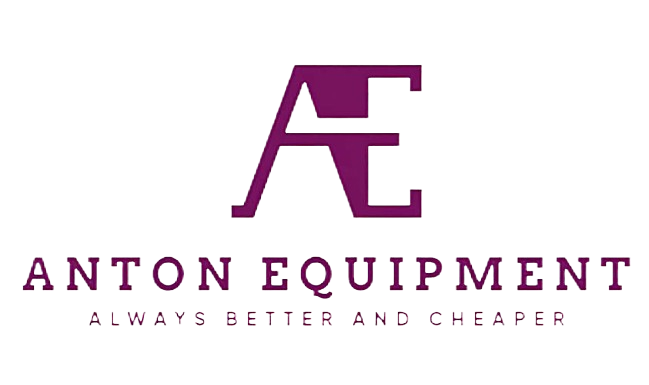News
Key Parameters to Consider When Selecting Excavator Hydraulic Quick Couplers
Compatibility with System Components
Excavator Model Specifications
Matching hydraulic quick couplers to excavators requires knowing what specs matter most for proper function. Big names in the business like CAT, Komatsu, and John Deere all build machines with different measurements and hydraulic setups. Getting the right coupler means matching those details exactly. We've seen plenty of problems arise when someone tries to force a coupler onto a Komatsu machine that wasn't rated for its pressure levels. The result? Everything runs inefficiently at best, and at worst, parts start failing prematurely. Many contractors learn this the hard way before they invest in custom made adapters or specially engineered couplers that actually work with their particular excavator models. Knowing these numbers isn't just about following rules either it saves time and money in the long run by keeping operations running smoothly without unexpected breakdowns.
Attachment Interface Design
How the attachment interface is designed plays a major role when picking out the right quick coupler for an excavator job site. Most operators work with either pin or hook style connections, and these two options affect coupler choice in different ways. Pin connections generally handle more types of attachments across various machines, though they often need some hands-on adjustment during setup. Hook systems provide solid lock mechanisms but tend to work best with certain kinds of attachments only. When the quick coupler matches up well with the attachment interface, everything runs smoother on site without unnecessary downtime. Take the S Type Coupler and CW Series models as good examples – both have proven themselves time after time in making excavators more versatile for digging tasks, demolition work, and other heavy lifting operations around construction zones. Getting this match right between coupler and interface makes all the difference in day-to-day productivity for equipment operators.
Hydraulic Pressure Ratings and Flow Capacity
Maximum Pressure Thresholds
Knowing what kind of hydraulic pressure different quick coupler models can handle matters a lot because it affects how well things run and keeps everyone safe on site. Most quick couplers, including those hydraulic quick connects we see everywhere, come with pressure limits set by their makers. Sticking to these numbers isn't just good practice it's basically required if we want our gear to last and work properly. Some field studies show that folks who skip checking these pressure specs end up dealing with broken couplers and dangerous situations down the line. When operators take the time to respect manufacturer guidelines, they protect their systems from damage and get much better service life out of their couplers too. Smart maintenance always starts with understanding these basic parameters first.
Flow Rate Compatibility
Getting the flow rate right between an excavator's hydraulic system and the quick coupler makes all the difference in how well everything works together. When these flow rates don't match up properly, things start going wrong pretty fast. We've seen cases where operators complain about slow response times or parts wearing out way too quickly because the coupler wasn't sized correctly for the hydraulic system. The numbers tell us something interesting too – proper alignment of these flow rates cuts down on maintenance expenses while getting more work done in less time. For anyone running heavy machinery, taking the time to understand those flow rate specs isn't just good practice, it's essential if they want their equipment to perform reliably day after day without breaking down unexpectedly.
Hydraulic Quick Coupler Mechanism Types
Poppet Valve Couplers
Poppet valve couplers have become pretty common among hydraulic quick couplers because they work so simply. Both ends feature those spring loaded poppet valves that open up when connected and shut tight when separated. What makes this setup work well for excavators is how it lets hydraulic fluid pass through freely when everything's linked together but stops leaks completely once disconnected. The main reason folks stick with poppet valves? They don't cost much compared to other options and hold up pretty darn well under tough conditions, even though there tends to be some small amount of fluid lost each time they're used. Just need to watch out though since improper handling can actually suck air into the whole hydraulic system. Most people who deal with heavy machinery regularly will tell you these couplers remain dependable choices, particularly when money matters and good performance without breaking the bank is what counts most.
Flat Face Designs
The flat face design has really taken off in hydraulic quick couplers because it cuts down on fluid spills when people plug and unplug connections. Compared to poppet valves, these couplers have that smooth flat surface which means much less chance of leaks or getting contaminants into the system during those connections. Industrial workers love them especially in places where keeping things clean matters a lot, so we see them all over manufacturing plants and even in some environmental protection work. Some studies point out that with these flat faces, fluid losses drop almost to nothing and there's no air getting mixed in either, which makes the whole hydraulic system run better and creates a safer workplace overall. That's why so many companies focused on green practices and precise operations keep going back to flat face couplers for their systems.
Tilting Mechanisms
The tilting feature in hydraulic quick couplers makes a big difference when it comes to moving around rough ground with an excavator. These systems let the coupler angle itself at different positions so operators don't need to constantly move the whole machine just to get attachments into place. On job sites, this kind of flexibility really boosts what we call excavation productivity because workers can dig more accurately and position materials exactly where they need them even in tough spots. Look at construction zones with all sorts of bumps and dips - these tilting mechanisms come in handy there. People who actually use these machines report better results and more options since they can swap tools quickly and tweak angles while working. For jobs that involve tricky movements and changing tool setups, having this capability becomes almost essential for getting things done right.
Material Selection and Durability Factors
Steel Alloys vs Composite Materials
The decision between steel alloys and composite materials matters a lot when building hydraulic quick couplers. Most people still go with steel because it's strong and lasts longer, especially when things get rough or stressed out. Steel stands up pretty well against wear and tear, which means parts tend to last longer before needing replacement. Composite materials are becoming more common these days though, mainly because they're lighter weight and don't rust as easily. But here's the catch they just don't hold up quite like steel does in certain situations where heavy duty performance is required. Some manufacturers find themselves torn between wanting lighter components and needing something that will actually stand the test of time.
What kind of material gets used makes all the difference when it comes to how long excavator attachments will last and how well they perform. Most folks know that steel alloys pack a lot more punch than other options, so they're typically what gets chosen for those really tough jobs where things get pounded on constantly. But there's another side to this story too. Composite materials have their own advantages, mainly because they cut down on weight quite a bit. Lighter attachments mean machines can move around easier without burning through fuel so fast. Take construction sites near saltwater areas for example many operators find composites hold up better against rust and corrosion problems. Research backs this up showing composites stand up to weathering pretty well, though steel still wins out in situations where stuff just keeps getting hammered day after day.
Corrosion Resistance Needs
Construction sites present real problems for hydraulic quick couplers when it comes to environmental factors. Workers deal with constant moisture from rain or groundwater, temperature swings between day and night, plus contact with various chemicals used on site. All this takes a toll on metal parts over time, weakening their structural strength. That's why applying corrosion resistant coatings has become so important nowadays. These protective treatments help prolong how long the couplers last before needing replacement, while also making sure they work reliably even under harsh conditions typical of construction environments.
Quick couplers can be protected from corrosion through various methods including galvanization and powder coating. These treatments basically form a shield against moisture and other environmental factors while keeping the metal components strong for longer periods. According to field data from manufacturing plants, proper corrosion protection cuts down on repair expenses by around 30% and makes workplaces safer when equipment stays reliable. Without these protective layers, couplers tend to develop rust spots pretty quickly, which causes all sorts of problems during operation. We've seen cases where rusty connections failed completely during critical operations, resulting in production shutdowns and potential injuries to workers nearby.
By prioritizing corrosion resistance in hydraulic quick couplers, operators can ensure safer and more cost-effective machinery use, as supported by various industry evaluations and studies.
Safety Standards and Maintenance Requirements
Positive Locking Systems
Positive locking systems matter a lot for excavators. The main reason? They keep attachments firmly attached while working, which stops accidents and makes everyone safer around the machine. Most modern systems work automatically, engaging locks without needing constant attention from operators who then know their tools won't suddenly come loose mid-job. We see different approaches across manufacturers too. Some rely on hydraulic pressure to push those locking pins into place, others use mechanical cams that click shut when everything lines up correctly. Take a look at industry specs such as ISO 13031:2016 and it becomes clear why these features show up so often in quick coupler designs. When companies follow those guidelines, they cut down on unexpected breakdowns and get better results day after day on construction sites everywhere.
Servicing Intervals
Keeping hydraulic quick couplers properly maintained is crucial for them to work at their best. Most manufacturers suggest checking these components anywhere from once a month to once a year, depending on how heavily they're used and what kind of environment they operate in. Maintenance isn't just about keeping things running smoothly it actually plays a major role in accident prevention when couplers start failing. Industry data indicates that regularly serviced couplers fail far less often than those neglected over time, which really drives home why sticking to maintenance schedules matters so much. When technicians perform routine inspections, they're not just preserving safety they're also making sure the equipment lasts longer before needing replacement. Operators who follow recommended maintenance protocols generally report fewer downtime incidents and better overall system performance across different industrial settings.

